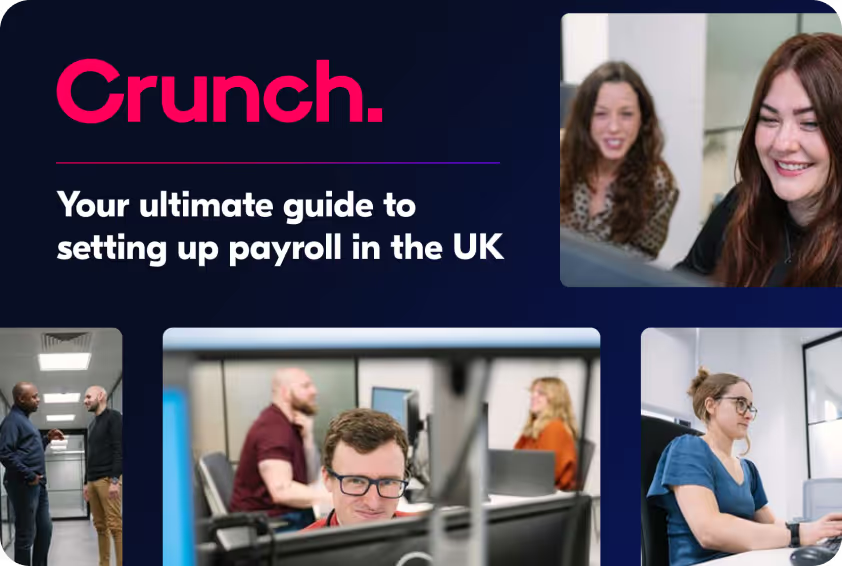Most people are aware of their right to maternity or paternity leave and pay – but not everyone is aware that the same benefits are available for adoption, too.
Adoption leave is split into two types – ordinary and additional. We’ll be exploring both in this article, explaining the key differences and how you can claim.
Who qualifies for adoption leave?
Employees who are:
- individuals who adopt
- a couple where a couple adopt jointly (the couple must choose which partner takes adoption leave; the other partner may be eligible for paternity leave and pay)
- newly matched with a child for adoption by an adoption agency recognised in the UK.
There are no age restrictions placed on adoption leave, and employees are eligible for the benefit – assuming they meet the above criteria – from their first day of employment.
Adoption leave and pay isn’t available in circumstances where a child has not been newly matched for adoption, for example when a step-parent is adopting a partner’s children, or if you adopt privately.
The UK government have amended legislation so that prospective parents in a surrogacy arrangement who apply for a parental order are now eligible for statutory adoption leave and pay, shared parental leave and pay and paternity leave. Those in “foster to adopt” arrangements run by local authorities are also included in the definition of adoption.
Couples who adopt a child from outside the UK will also have the right to shared parental leave and pay. Please refer to the gov.uk website for more details.
Antenatal appointments
Prospective fathers/partners of pregnant women and intended parents in surrogacy arrangements have the right to take time off to attend two antenatal appointments with their partner. There is no legal right to paid time off and the time off to attend appointments will be for a maximum of 6.5 hours on each occasion. This applies to all employees and agency workers with 12 weeks service.
‘Fathers’ must provide reasonable notice of the appointment but (legally) do not need to provide evidence of the appointment.
Since April 2015, parents have been entitled to paid time off to attend adoption appointments. The primary adopter can take paid time off to attend up to five pre-adoption appointments; the secondary adopter will be entitled to unpaid time off to attend up to two pre-adoption appointments. Each appointment must be no longer than 6.5 hours time off work on each occasion. Employees who suffer a detriment or dismissal in relation to taking time off for adoption appointments will be protected under unfair dismissal laws.
What you are eligible for
If you meet the above criteria, you qualify for 52 weeks of Statutory Adoption Leave (26 weeks Ordinary and 26 weeks Additional Leave) and 39 weeks of Statutory Adoption Pay:
- You can choose when to start your adoption leave – from the date of the child’s placement (whether this is earlier or later than expected), or from a fixed date which can be up to 14 days before the expected date of placement
- Only 1 person in a couple can take Adoption Leave. The other person could get Paternity Leave instead.
- You must tell your employer you have been matched within seven days of notification (if this is reasonably practical), give your employer at least 28 days notice of the date you want Statutory Adoption Pay to start, if possible, and give them the ‘matching certificate’ from your Adoption Agency
- You can change your mind about when you want to start your adoption leave as long as you give your Employer 28 days notice.
- You must give your employer at least 8 weeks notice if you want to change your return to work date
{{tax-guide}}
What rights does a woman have while on ordinary adoption leave?
During the 26 weeks adoption leave, you’re entitled to benefit from all your normal terms and conditions of employment, except for salary/pay, including statutory holiday entitlement and employers’ pension contributions.
If you wish to return to work before the end of ordinary adoption leave (or during additional adoption leave – see below) you need to give your employer eight weeks notice of your new return date. A new type of employment contract – the Employee Shareholder Contract – came into being on 1st September 2013. Under this type of contract, employees would have to give 16 weeks notice.
At the end of ordinary adoption leave, you’ve the right to return to your original job on your original terms and conditions. If a redundancy situation arises, you must be offered a suitable alternative vacancy if one is available (see below as there are changes to the law from 6th April 2024). If the employer can’t offer you suitable alternative work, you may be entitled to redundancy pay.
Additional adoption leave
Additional adoption leave starts immediately after ordinary adoption leave and continues for a further 26 weeks. However, you don’t have to take Additional Adoption Leave.
During this period your contract of employment continues but with limited terms and conditions, but you continue to accrue statutory holiday entitlement. This additional leave means you can be away from your job on adoption leave for around 52 weeks in total.
When an employer writes to you setting out your return date (which they must do within 28 days of you telling them that you are adopting) they’ll assume that, if you are eligible for additional adoption leave, you will be taking it. If you wish to change your return date you must give eight weeks notice of this.
What rights does a woman have while on additional adoption leave?
You’re entitled to return to your original job or, if this isn’t reasonably practicable, to a suitable alternative job. If your employer can’t offer you suitable alternative work, you may be entitled to redundancy pay (see below, there are new rights from 6th April 2024).You can also take four weeks of Parental Leave at the end of your Adoption Leave without affecting your return to work rights. If you decide not to return from Adoption Leave, you must give your employer your normal ‘contractual’ notice to resign.
Statutory Adoption Pay (SAP)
Payments during ordinary and through part of the additional adoption leave are available to employees from day one of their employment, and are paid for a maximum of 39 weeks.
SAP will be 90% of your average weekly earnings for the first six weeks then paid at the flat rate of £184.03 per week, increasing to £187.18 from 67th April 2025.Normal tax and national insurance contributions will be deducted from SAP as it is paid through your normal payroll.
Your employer may offer more generous or longer payments during adoption leave if this is written into your contract of employment. They must also continue making any pension contributions they make for you during the whole SAP period (or for all the time you receive any ‘contractual’ Adoption Pay).
If you don’t take all of the 39 weeks SAP you’re eligible for, the other adopter (partner/spouse) may be able to ‘take over’ the remaining entitlement you have not used as Shared Parental Leave.
‘Keeping in touch’ days were introduced in 2007, allowing employees to perform up to 10 days' work so long as both parties agree what work will be done, and how much they’ll receive as payment. This work can include relevant training, attending conferences/meetings etc.
You don’t lose your entitlement to adoption leave or pay during these days.
Holiday entitlement
During Adoption Leave you obviously can’t take holiday and be on adoption leave at the same time. Therefore you must take your holiday entitlement before or after adoption leave. For details on bank holidays that occur during statutory adoption leave see our Working Time Regulations page.
Neonatal Care Leave and Pay
In April 2025 a new right to Neonatal Care Leave and Pay will be introduced, which will run in parallel to Adoption Leave and Pay - you can read the details here.
Redundancy Protection:
In 2019 the Government announced a proposed Employment Bill, which would extend protection from discrimination in redundancy situations for those who are pregnant, or returning from maternity leave, adoption or shared parental leave. In May 2023 the Protection from Redundancy (Pregnancy and Family Leave) Act 2023 passed into law, and this law comes into effect on 6th April 2024.
The new Redundancy Protection Law explained:
From 6th April 2024, in England, Wales and Scotland, there are new laws that provide a significant extension to the current rights for those employees who are pregnant, or on maternity leave/shared parental leave/adoption leave to be offered suitable alternative vacancies in a redundancy situation - where such a job exists – in priority to anyone else provisionally selected for redundancy.
The new laws:
During Pregnancy – if the Employer has been informed of the pregnancy, on or after 6th April 2024, then a pregnant employee must be offered first refusal of a ‘suitable alternative employment’ in a redundancy situation.
This enhanced protection starts from the date the employee tells their employer about their pregnancy (on or after 6th April 2024). The ‘protected’ period of pregnancy ends on the day the SMP starts (or if not entitled to SMP, the protected period ends 2 weeks after the end of the pregnancy); however, they will then be covered by protection during Maternity Leave (see below).
During Maternity Leave – an employee must be offered first refusal of suitable alternative employment in a redundancy situation, for 18 months from the first day of the Expected Week of Childbirth (EWC), or 18 months from the exact birth date. The ‘protected’ period applies to any maternity leave ending on or after 6th April 2024.
So, for example, the new protection means that if an employee takes 12 months maternity leave, they’ll receive an extra 6 months of ‘protection’ after they return to work.
The new rules also apply to employees who suffer a miscarriage before the end of 24 weeks from the start of the pregnancy – they will receive protection for a period of 2 weeks after the pregnancy ends. [After 24 weeks of pregnancy, a miscarriage/loss if classed as a still-birth and the employee is entitled to full SMP and will be entitled to 18 months redundancy protection (after the child’s date of birth/expected week of childbirth)].
During Adoption Leave - an employee must be offered first refusal of suitable alternative employment in a redundancy situation, for 18 months from the placement of the child or start of adoption leave.
During Shared Parental Leave – including fathers /partners who take SPL - an employee must be offered first refusal of suitable alternative employment in a redundancy situation, for 18 months from birth or placement for adoption, provided the parent has taken a period of at least 6 consecutive weeks of Shared Parental Leave and has not taken maternity or adoption leave.
Applies for SPL starting on or after 6th April 2024.
If the employee has taken less than 6 consecutive weeks of SPL the protection ends at the end of SPL.
If the employee has taken adoption/maternity leave before SPL, they are entitled to the protection period from the original maternity/adoption leave, and do not have an extension to the protection from the SPL.
Generally – if an employee takes a shorter ‘family’ leave period than they are entitled to, they are still protected for the same amount of time as described above.
Failure to offer an employee with this enhanced protected any ‘suitable alternative employment’ (where vacancies exist), will mean the employee has a claim for automatic unfair dismissal and this could potentially lead to a discrimination claim.
Guidance will be published by the Department for Business and Trade by April 2024. However, at present there is no guidance about what Employers should do if there are more employees with priority status (protection), than there are suitable alternative vacancies!
Please note that the advice given on this website and by our Advisors is guidance only and cannot be taken as an authoritative or current interpretation of the law. It can also not be seen as specific advice for individual cases. Please also note that there are differences in legislation in Northern Ireland.

.svg)



.webp)












